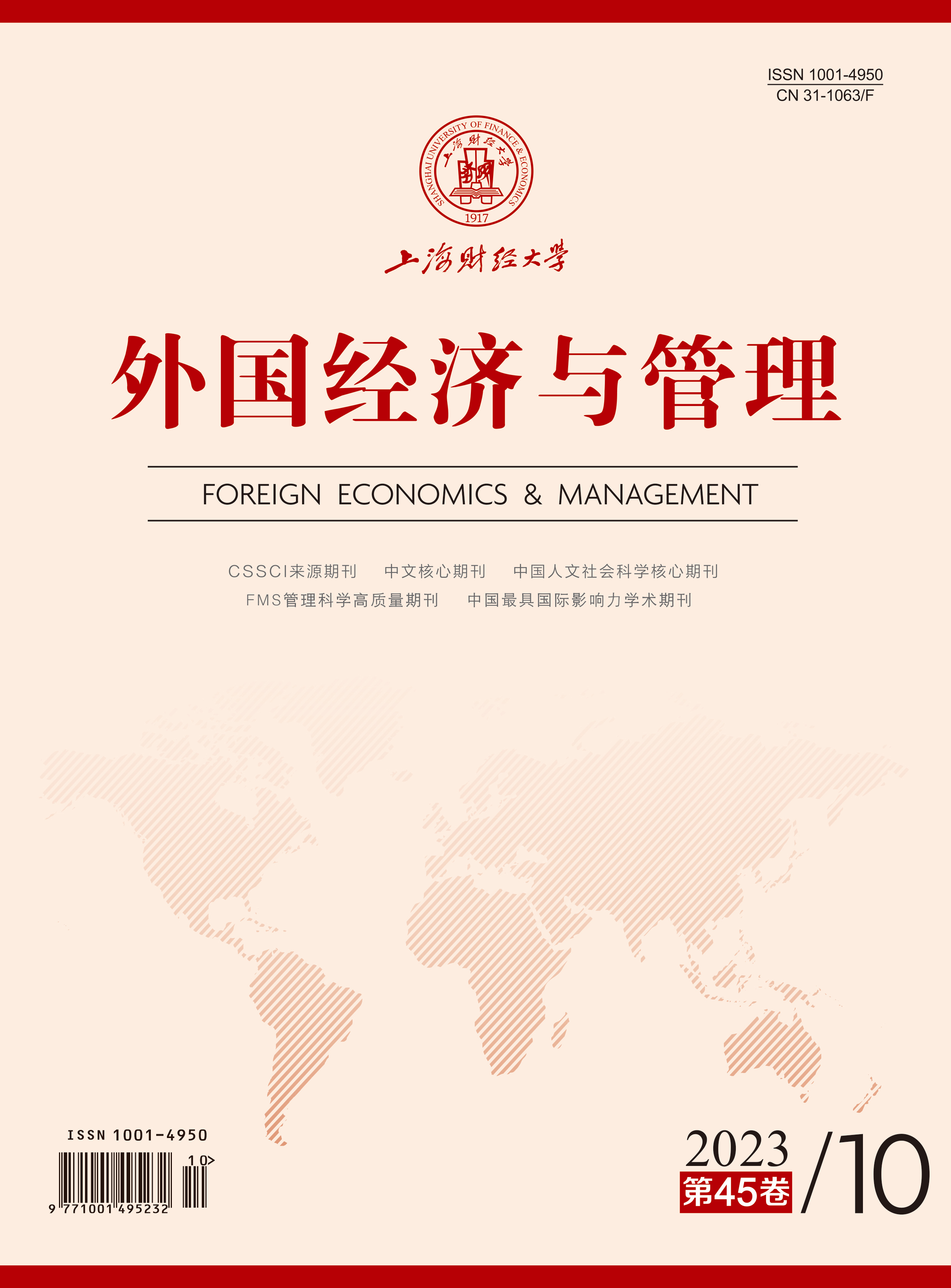“专精特新”企业高度聚焦某一细分市场并形成独特竞争优势,却也因细分市场容量有限而导致专业化“锁定”问题。该类企业如何基于既有优势搜寻创新机会来突破发展瓶颈?这一问题仍未得到充分的理论解释。本文基于创新搜寻视角,选取四家“专精特新”企业进行多案例比较研究,探索该类企业通过创新搜寻突破专业化“锁定”的机制。研究发现:第一,创新搜寻成为“专精特新”企业突破专业化“锁定”困境的逻辑起点,呈现组合性、异质性、合作性特征。第二,面对资源有限性约束,“专精特新”企业通过“资源借力”和“资源放大”等杠杆化行动聚合力量,助推创新搜寻方案落地。第三,基于研发与需求的平衡策略是“专精特新”企业突破困境的重要路径,包括需求拉动研发、研发推动需求、研发与需求双向驱动三类。本文拓宽了创新搜寻理论的解释边界,为“专精特新”企业突破专业化“锁定”的研究提供了独特的理论视角,也具有较强的实践指导价值。
“专精特新”企业如何突破专业化“锁定”困境?——创新搜寻视角下的多案例研究
摘要
参考文献
2 葛宝山, 赵丽仪. 创业导向、精一战略与隐形冠军企业绩效[J]. 外国经济与管理, 2022, 44(2): 117-135. DOI:10.16538/j.cnki.fem.20210827.401
4 李卅立, 郑孝莹, 王永贵. 需求基础观: 从用户角度来研究战略管理[J]. 管理学季刊, 2016, 1(3): 128-141,147.
5 刘存福, 侯光明, 李存金. 网络杠杆——企业竞争优势来源新探[J]. 科学学与科学技术管理, 2006, 27(3): 148-152. DOI:10.3969/j.issn.1002-0241.2006.03.030
7 尚林. 隐形冠军发展天花板的多元化突破——从“安索夫矩阵”得到的启示[J]. 工业技术经济, 2012, 31(4): 102-107. DOI:10.3969/j.issn.1004-910X.2012.04.016
8 魏江, 冯军政. 企业知识搜索模式及其对企业技术创新的影响研究[J]. 科学管理研究, 2009, 27(6): 55-60. DOI:10.19445/j.cnki.15-1103/g3.2009.06.013
10 许晖, 张超敏, 单宇. 中国跨国企业海外市场机会构建内在机理研究——基于资源杠杆理论视角的多案例研究[J]. 南开管理评论, 2020, 23(6): 4-15,189. DOI:10.3969/j.issn.1008-3448.2020.06.002
12 赵道致, 张靓. 资源杠杆——基于企业网络的竞争优势获取模式[J]. 科学学与科学技术管理, 2006, 27(9): 169-170. DOI:10.3969/j.issn.1002-0241.2006.09.034
13 Audretsch D B, Lehmann E E, Schenkenhofer J. Internationalization strategies of hidden champions: Lessons from germany[J]. Multinational Business Review, 2018, 26(1): 2-24. DOI:10.1108/MBR-01-2018-0006
14 Baraldi E, Strömsten T. Controlling and combining resources in networks: From uppsala to stanford, and back again: The case of a biotech innovation[J]. Industrial Marketing Management, 2009, 38(5): 541-552. DOI:10.1016/j.indmarman.2008.11.010
15 Barney J B. Is the resource-based “view” a useful perspective for strategic management research? Yes[J]. Academy of Management Review, 2001, 26(1): 41-56.
16 Cyert R M, March J G. A behavioral theory of the firm[M]. Englewood Cliffs: Prentice-Hall, 1963.
17 Eisenhardt K M, Graebner M E. Theory building from cases: Opportunities and challenges[J]. Academy of Management Journal, 2007, 50(1): 25-32. DOI:10.5465/amj.2007.24160888
18 Fabrizio K R. Absorptive capacity and the search for innovation[J]. Research Policy, 2009, 38(2): 255-267. DOI:10.1016/j.respol.2008.10.023
19 Grimpe C, Sofka W. Search patterns and absorptive capacity: Low-and high-technology sectors in European countries[J]. Research Policy, 2009, 38(3): 495-506. DOI:10.1016/j.respol.2008.10.006
20 Jain A, Mitchell W. Specialization as a double-edged sword: The relationship of scientist specialization with R&D productivity and impact following collaborator change[J]. Strategic Management Journal, 2022, 43(5): 986-1024. DOI:10.1002/smj.3357
21 Katila R. New product search over time: Past ideas in their prime?[J]. Academy of Management Journal, 2002, 45(5): 995-1010. DOI:10.2307/3069326
22 Katila R, Ahuja G. Something old, something new: A longitudinal study of search behavior and new product introduction[J]. Academy of Management Journal, 2002, 45(6): 1183-1194. DOI:10.2307/3069433
23 Luo Y D, Child J. A composition-based view of firm growth[J]. Management and Organization Review, 2015, 11(3): 379-411. DOI:10.1017/mor.2015.29
24 Nemet G F. Demand-pull, technology-push, and government-led incentives for non-incremental technical change[J]. Research Policy, 2009, 38(5): 700-709. DOI:10.1016/j.respol.2009.01.004
25 Priem R L, Butler J E. Is the resource-based “view” a useful perspective for strategic management research?[J]. Academy of Management Review, 2001, 26(1): 22-40.
26 Rosenkopf L, Nerkar A. Beyond local search: Boundary-spanning, exploration, and impact in the optical disk industry[J]. Strategic Management Journal, 2001, 22(4): 287-306. DOI:10.1002/smj.160
27 Schenkenhofer J. Hidden Champions: A review of the literature & future research avenues[J]. Management Review Quarterly, 2022, 72(2): 417-482. DOI:10.1007/s11301-021-00253-6
28 Schmidt J, Keil T. What makes a resource valuable? Identifying the drivers of firm-idiosyncratic resource value[J]. Academy of Management Review, 2013, 38(2): 206-228. DOI:10.5465/amr.2010.0404
29 Sidhu J S, Commandeur H R, Volberda H W. The multifaceted nature of exploration and exploitation: Value of supply, demand, and spatial search for innovation[J]. Organization Science, 2007, 18(1): 20-38. DOI:10.1287/orsc.1060.0212
30 Teece D J, Pisano G, Shuen A. Dynamic capabilities and strategic management[J]. Strategic Management Journal, 1997, 18(7): 509-533. DOI:10.1002/(SICI)1097-0266(199708)18:7<509::AID-SMJ882>3.0.CO;2-Z
31 Thite M, Wilkinson A, Budhwar P, et al. Internationalization of emerging Indian multinationals: Linkage, leverage and learning (LLL) perspective[J]. International Business Review, 2016, 25(1): 435-443. DOI:10.1016/j.ibusrev.2015.06.006
32 Todorova G, Durisin B. Absorptive capacity: Valuing a reconceptualization[J]. Academy of Management Review, 2007, 32(3): 774-786. DOI:10.5465/amr.2007.25275513
引用本文
许晖, 李阳, 刘田田, 等. “专精特新”企业如何突破专业化“锁定”困境?——创新搜寻视角下的多案例研究[J]. 外国经济与管理, 2023, 45(10): 3-19.
导出参考文献,格式为:





 6410
6410  10034
10034

